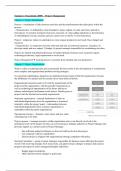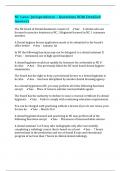Samenvatting
Summary book 'Project management' Passenheim 2009
- Instelling
- Tilburg University (UVT)
- Boek
- Project Management
Summary of the book project management written by Olaf Passenheim (2009). Necessary for the part project management of the course Financial and Project management. 2nd year bachelor course. Personeelwetenschappen, people management. Additional to material from lectures. More clear concept explanat...
[Meer zien]





